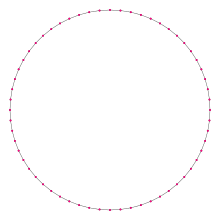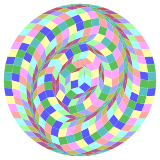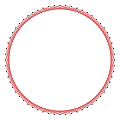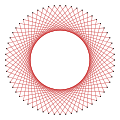
In geometry, an icosagon or 20-gon is a twenty-sided polygon. The sum of any icosagon's interior angles is 3240 degrees.

In geometry, a triacontagon or 30-gon is a thirty-sided polygon. The sum of any triacontagon's interior angles is 5040 degrees.

In geometry, a pentacontagon or pentecontagon or 50-gon is a fifty-sided polygon. The sum of any pentacontagon's interior angles is 8640 degrees.

In geometry, a hectogon or hecatontagon or 100-gon is a hundred-sided polygon. The sum of all hectogon's interior angles are 17640 degrees.

In geometry, an octacontagon is an eighty-sided polygon. The sum of any octacontagon's interior angles is 14040 degrees.
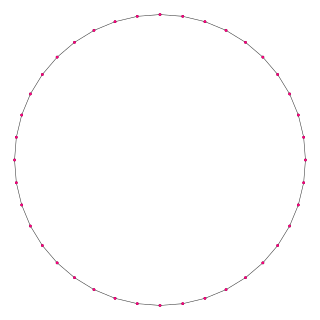
In geometry, a tetracontagon or tessaracontagon is a forty-sided polygon or 40-gon. The sum of any tetracontagon's interior angles is 6840 degrees.

In geometry, an icositetragon or 24-gon is a twenty-four-sided polygon. The sum of any icositetragon's interior angles is 3960 degrees.
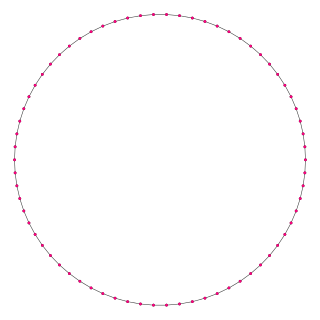
In geometry, a heptacontagon or 70-gon is a seventy-sided polygon. The sum of any heptacontagon's interior angles is 12240 degrees.

In geometry, an enneacontagon or enenecontagon or 90-gon is a ninety-sided polygon. The sum of any enneacontagon's interior angles is 15840 degrees.

In geometry, a triacontadigon or 32-gon is a thirty-two-sided polygon. In Greek, the prefix triaconta- means 30 and di- means 2. The sum of any triacontadigon's interior angles is 5400 degrees.

In geometry, a tetracontadigon or 42-gon is a forty-two-sided polygon. The sum of any tetracontadigon's interior angles is 7200 degrees.

In geometry, a hexacontatetragon or 64-gon is a sixty-four-sided polygon. The sum of any hexacontatetragon's interior angles is 11160 degrees.

In geometry, a tetracontaoctagon or 48-gon is a forty-eight sided polygon. The sum of any tetracontaoctagon's interior angles is 8280 degrees.

In geometry, an enneacontahexagon or enneacontakaihexagon or 96-gon is a ninety-six-sided polygon. The sum of any enneacontahexagon's interior angles is 16920 degrees.
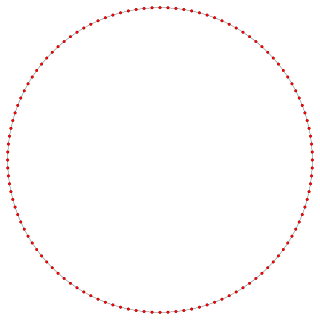
In geometry, a 120-gon is a polygon with 120 sides. The sum of any 120-gon's interior angles is 21240 degrees.

In geometry, a 360-gon is a polygon with 360 sides. The sum of any 360-gon's interior angles is 64440 degrees.
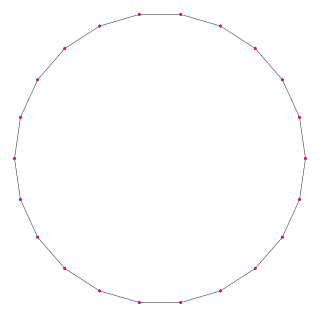
In geometry, an icosidigon or 22-gon is a twenty-two-sided polygon. The sum of any icosidigon's interior angles is 3600 degrees.

In geometry, an icosihexagon or 26-gon is a twenty-six-sided polygon. The sum of any icosihexagon's interior angles are 4320°.

In geometry, an icosioctagon or 28-gon is a twenty eight sided polygon. The sum of any icosioctagon's interior angles is 4680 degrees.
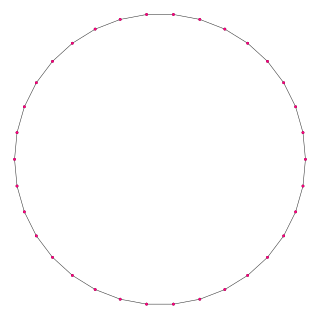
In geometry, a triacontatetragon or triacontakaitetragon is a thirty-four-sided polygon or 34-gon. The sum of any triacontatetragon's interior angles is 5760 degrees.
